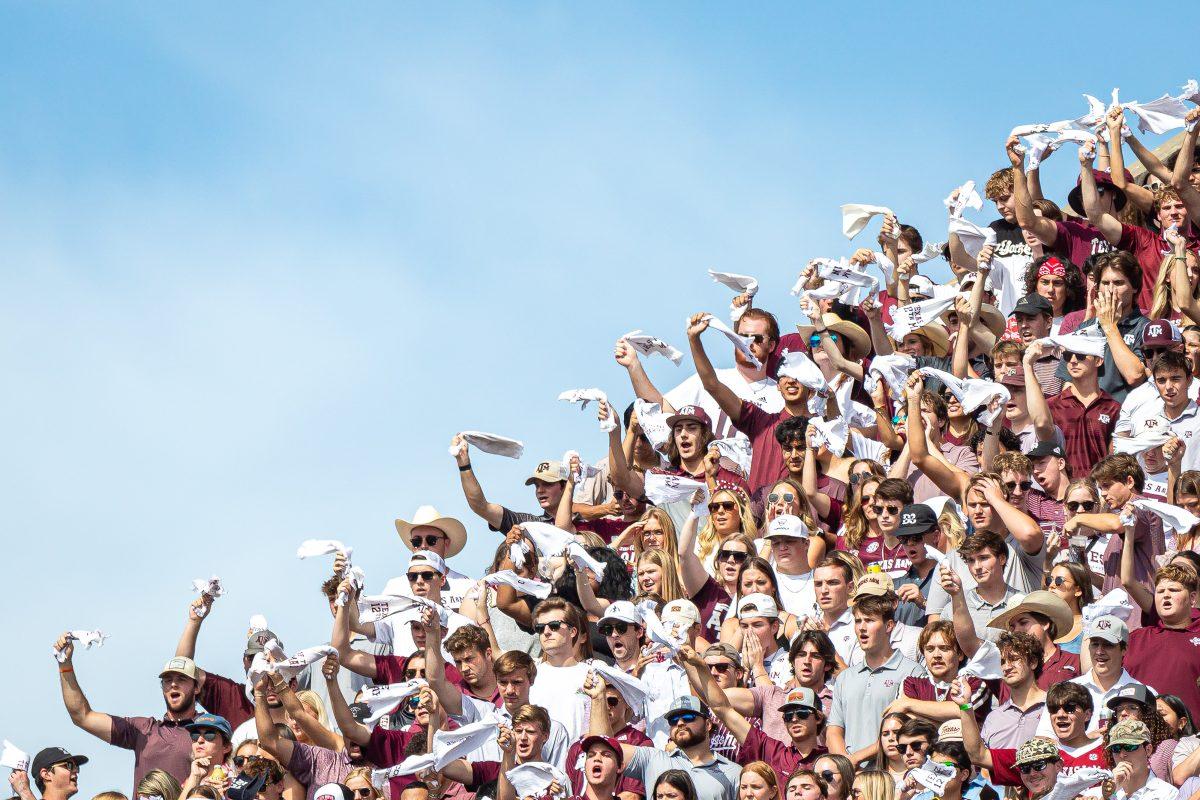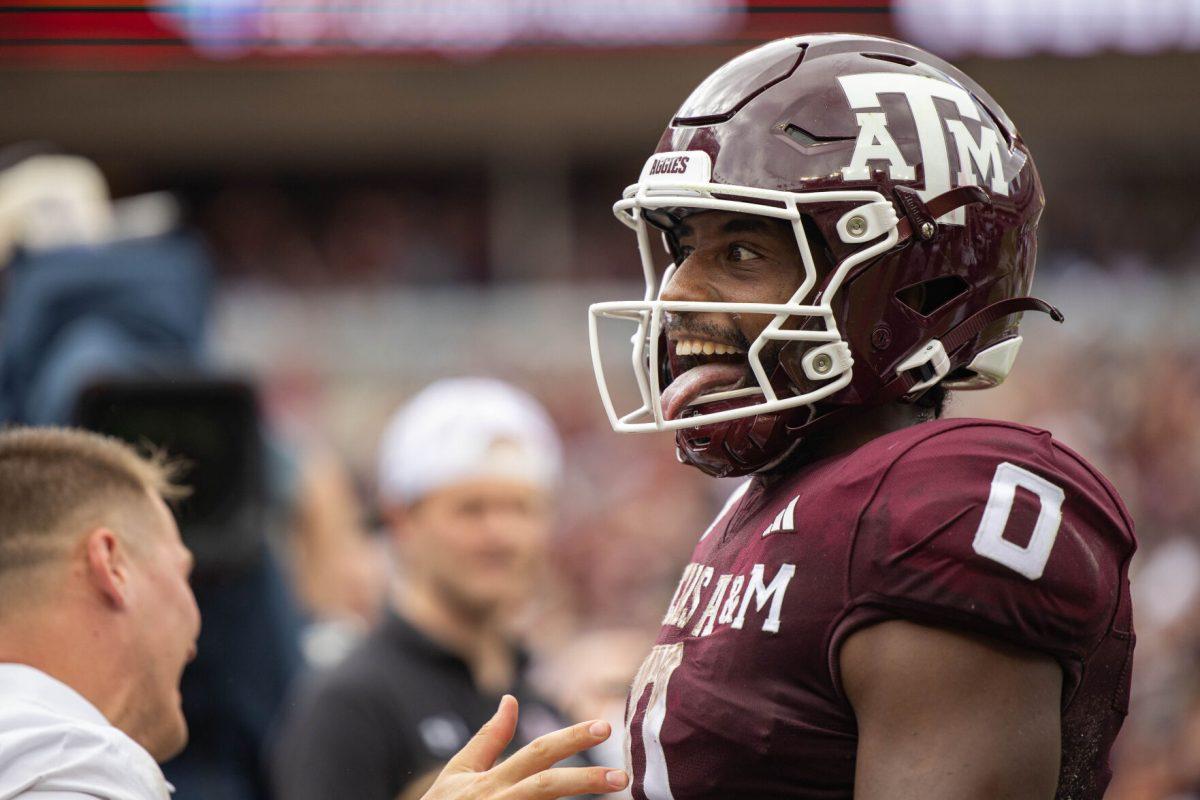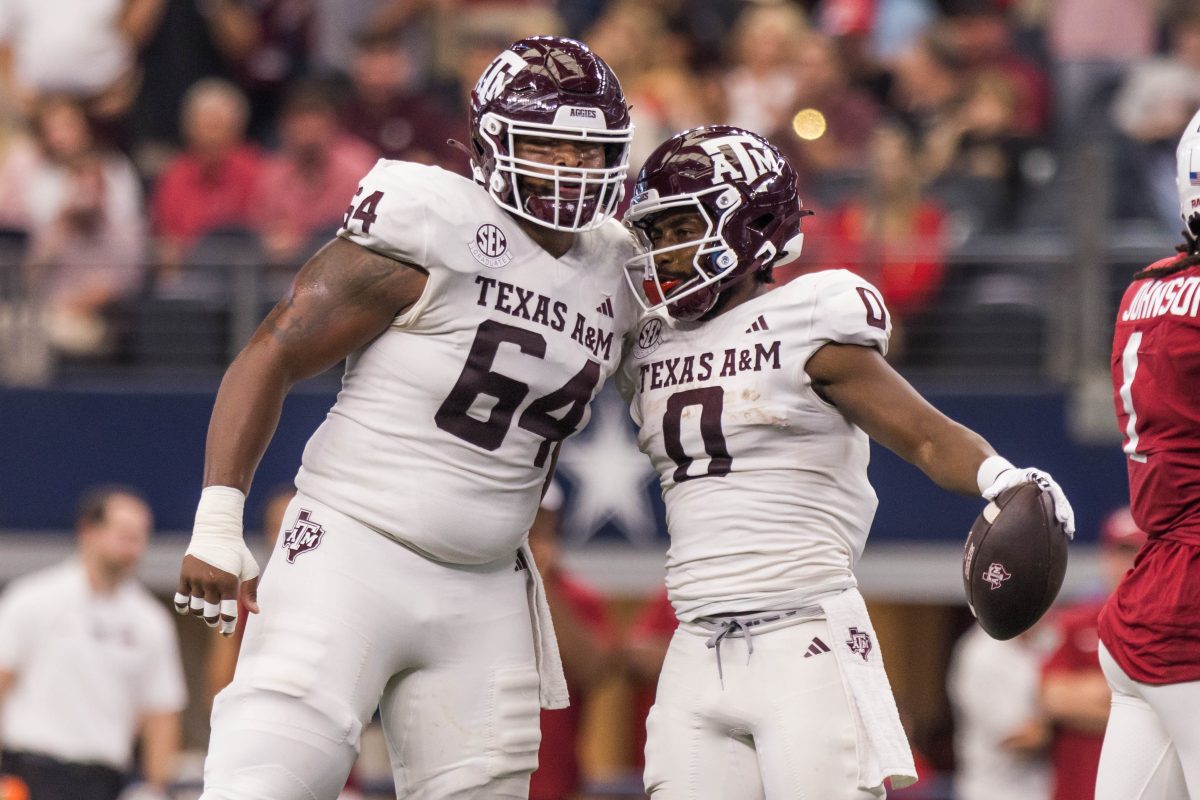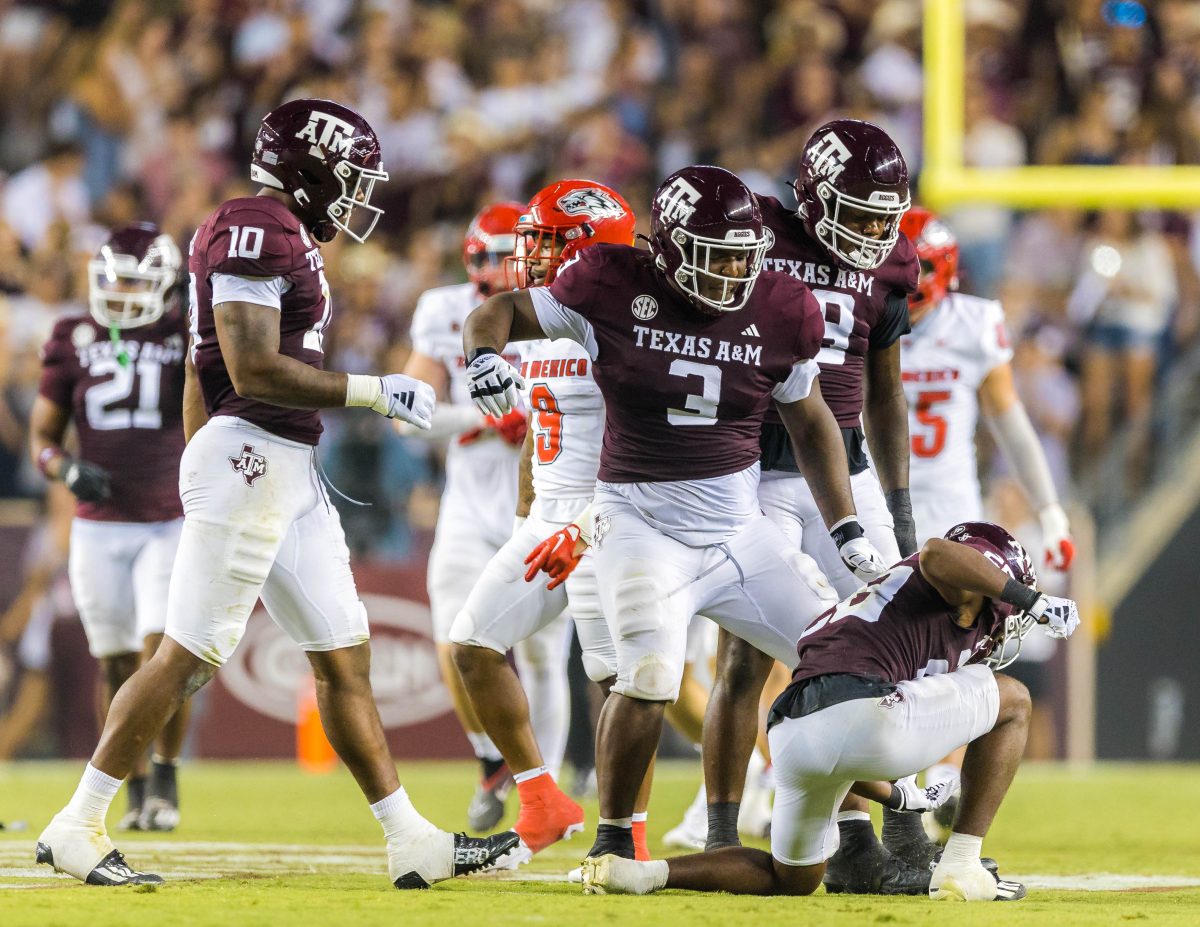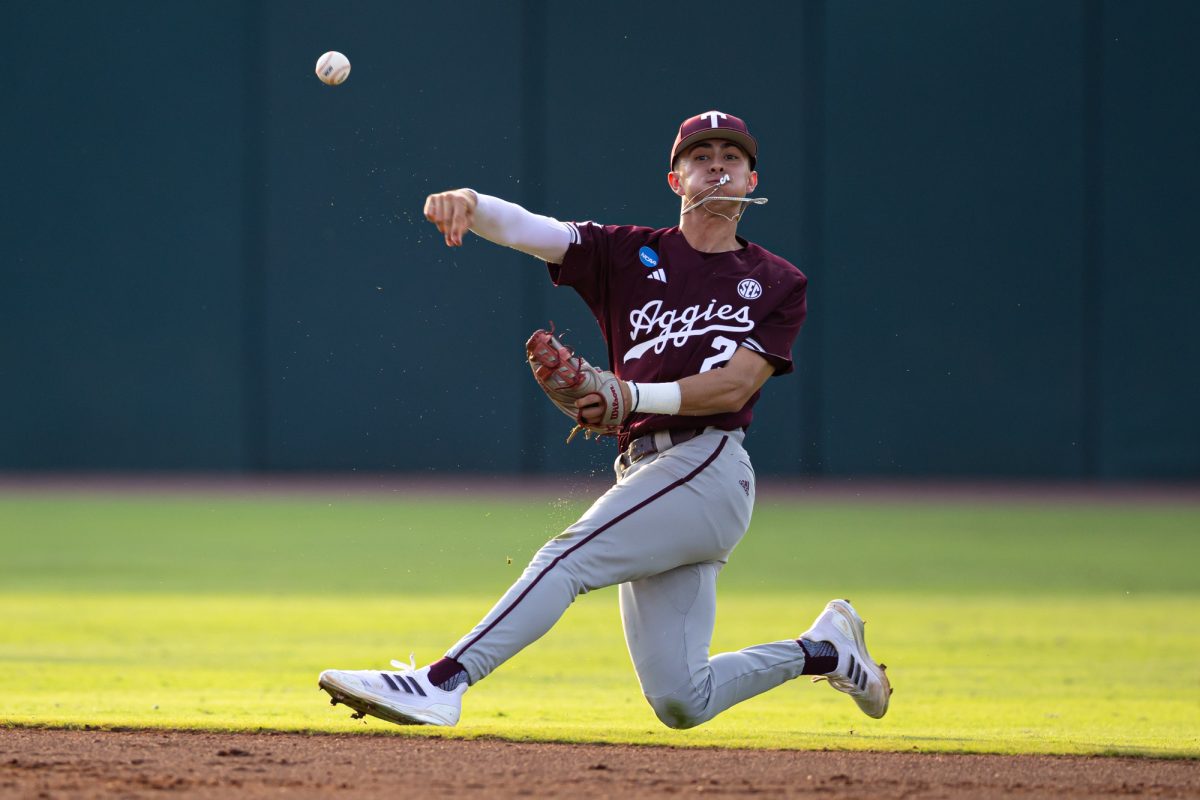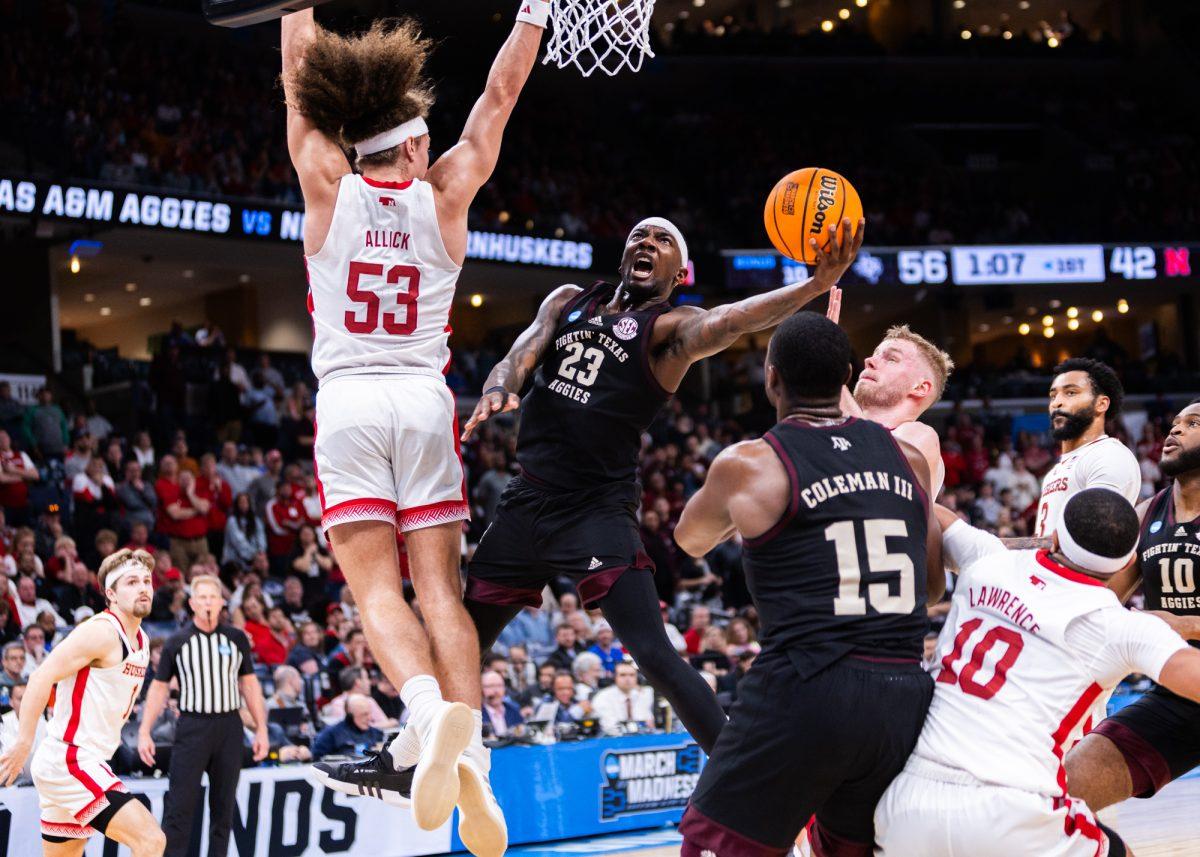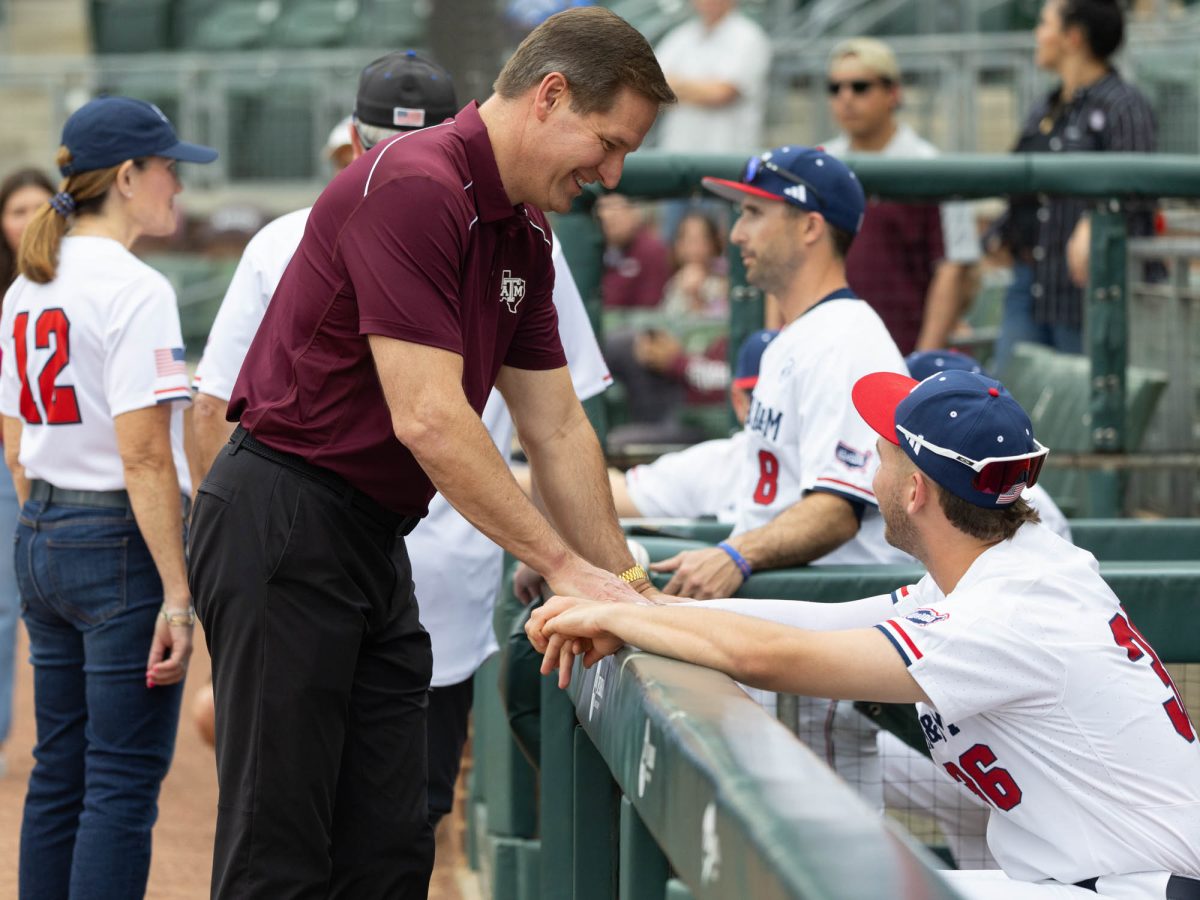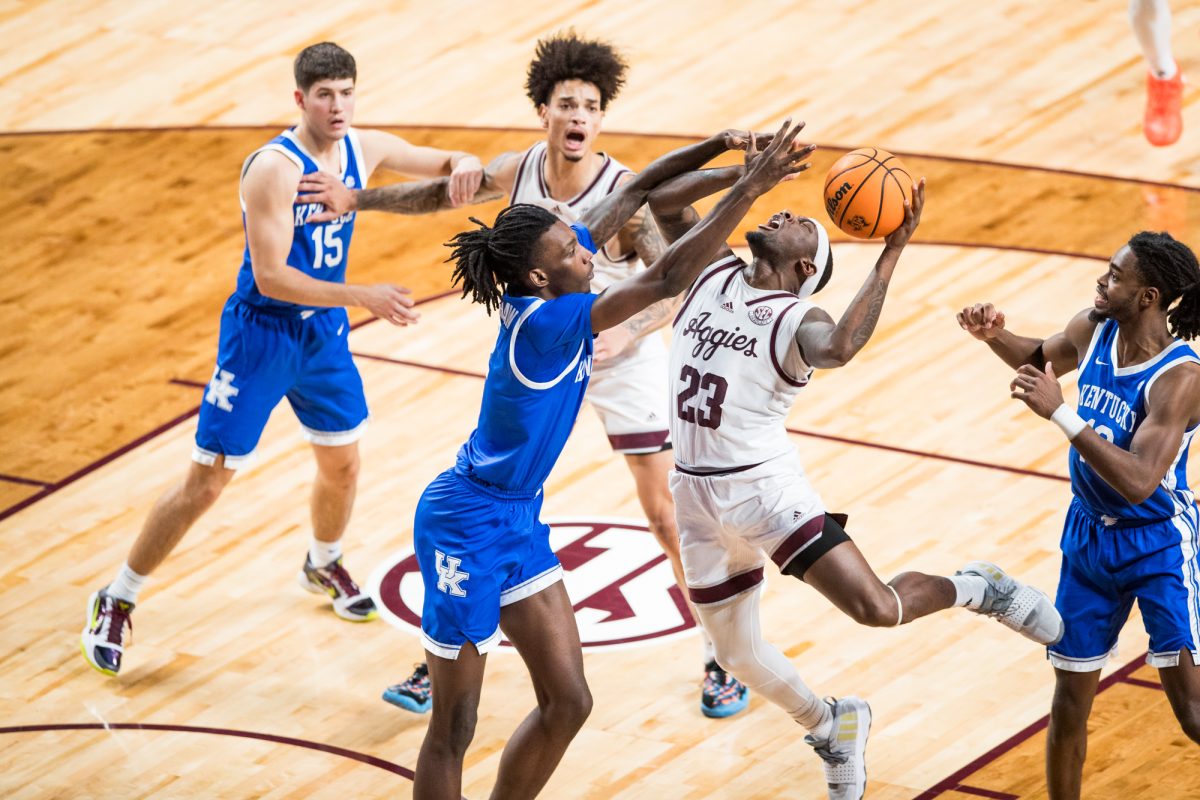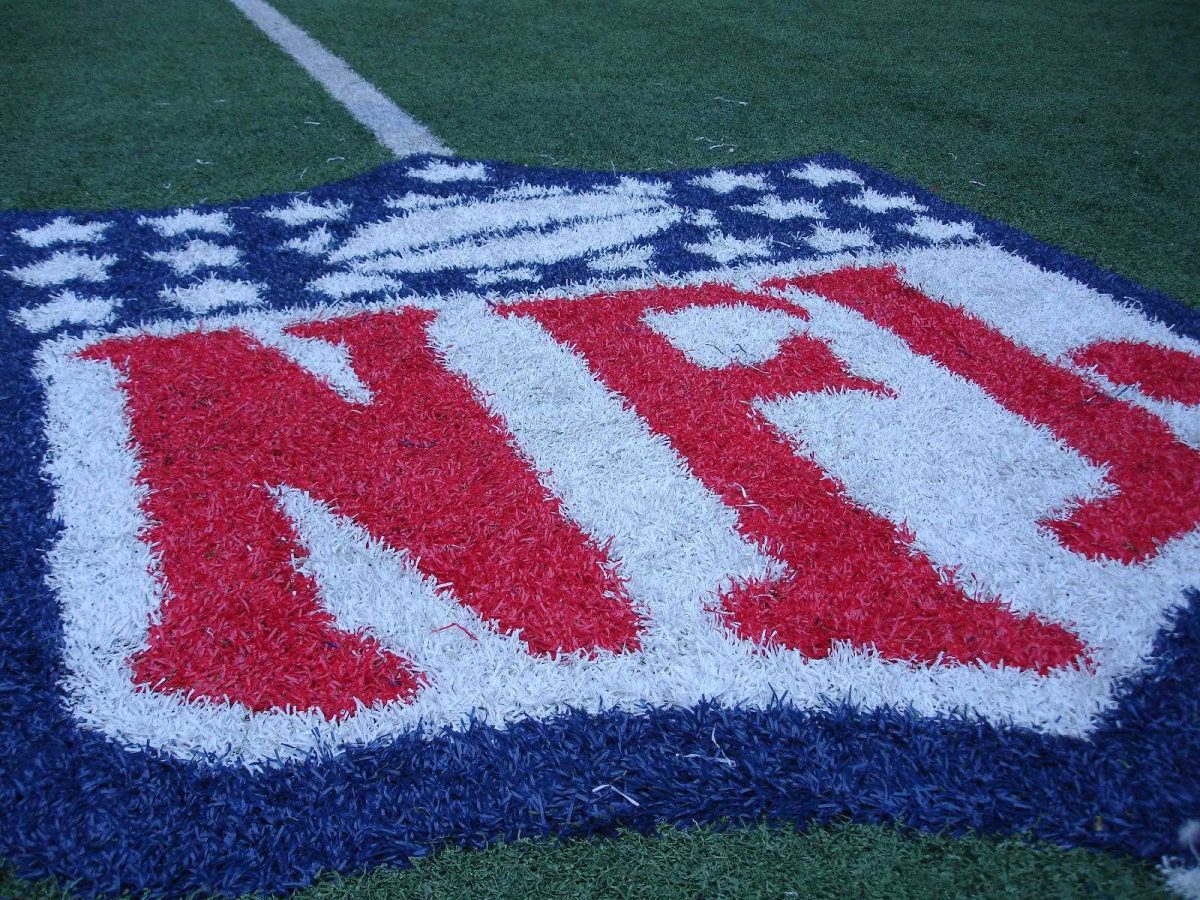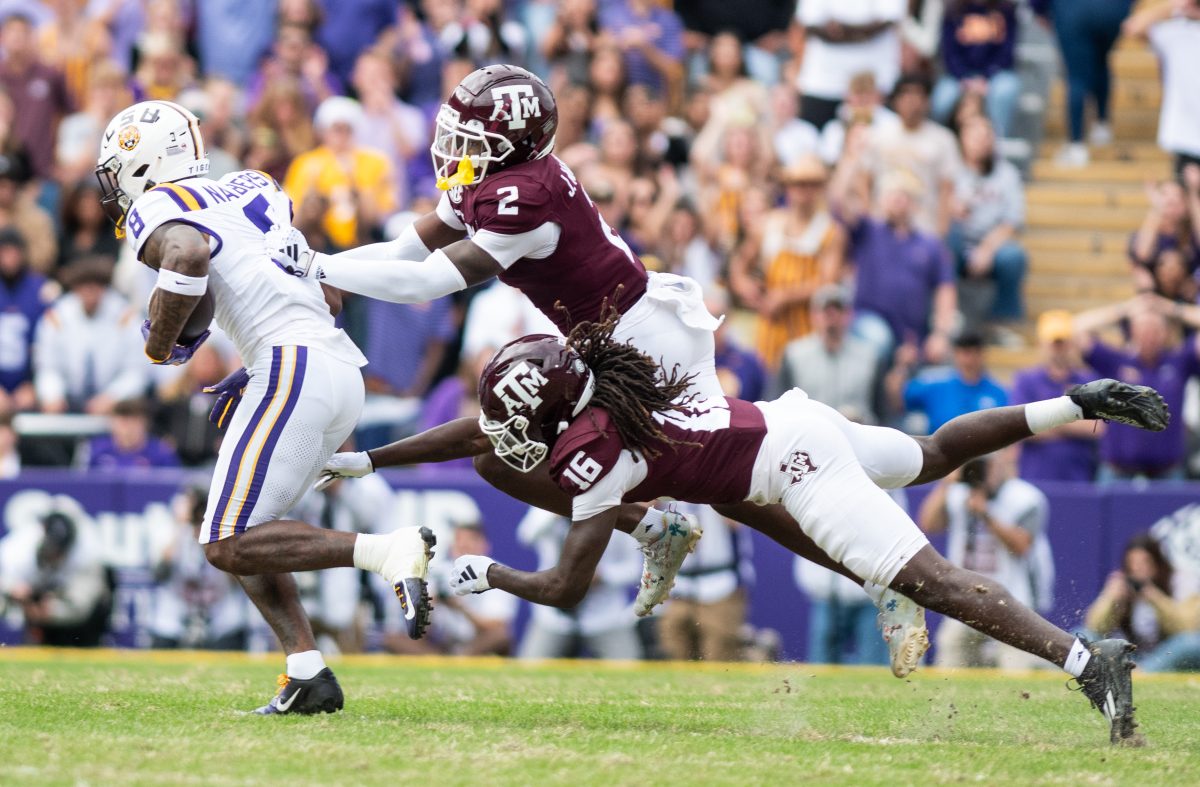The Jolly Roger: The iconic skull-and-crossbones flown by pirates across the globe as they stood and fought against the wealthy powers-that-be in pursuit of their own glory during piracy’s golden age.
It’s fitting to see the flag embraced by Washington State and F.C. St. Pauli.
On Sept. 9, Washington State players raised the flag in tribute of former coach Mike Leach, as the Cougars upset No. 19 Wisconsin 31-22. The Cougars hired Leach in late 2011 after seeing how his Texas Tech teams were able to be a constant thorn in the side of the Big 12’s biggest names.
At Washington State, Leach’s teams would paint a similar picture, upsetting the Pac-12’s power players time and time again — the same schools who would go on to destroy the conference by jumping ship to the Big Ten and Big 12 in the name of securing more television revenue.
Leach’s fascination with pirates became well-known. In them, he saw the traits that he would instill in his teams at every stop he made — and would go on to make his teams legendary:
“Pirates function as a team,” Leach told ESPN in 2008. “There were a lot of castes and classes in England at the time. But with pirates, it didn’t matter if you were black, white, rich or poor. The object was to get a treasure. If the captain did a bad job, you can just overthrow him.”
It’s that idea that takes us to the waterfront district of St. Pauli in Hamburg, Germany.
Buccaneers of the league
The first thing you have to understand about F.C. St. Pauli is blatantly, famously and unapologetically political. The club was one of Germany’s first to ban right-wing nationalist activities in the 1980s — around the same time that the team earned its “Freibeuter der Liga” nickname (literally: “buccaneers of the league”) due to its association with the Jolly Roger symbol.
The district itself is a multicultural melting pot with a substantial immigrant population — something which has greatly influenced the team’s identity — one that is explicitly anti-racist, anti-fascist and left-wing.
“FC St. Pauli is a club rooted in a city district,” the club’s guiding principles read. “It owes its identity to this and has a social and political responsibility towards the district and the people who live there.”
On the field, St. Pauli is remarkably average. The club currently sits in 2. Bundesliga, the second tier of German soccer, and has since it was demoted from the Bundesliga in 2011.
Yet the club has been averaging near sold-out attendance for years (COVID-affected seasons notwithstanding). So what keeps St. Pauli’s fans — and fans of clubs across the continent — packing its ground, despite its middling on-field performance?
And what has kept Washington State’s Cougar faithful — and fans of colleges across the United States — so devoted, despite up-and-down play and the historic collapse of their conference?
For that, we need a bit of a history lesson.
A club in every city and a city for a team
The first reason European football and American college football have developed such devoted fan bases is simple geography. There is a football club in nearly every city — and every nook and cranny of every major capital — in Europe.
Meanwhile, America’s professional leagues all hover around 30 teams, all in a handful of the nation’s major cities bar one (hello, Green Bay, Wisconsin!). And sure, there’s minor leagues, but without promotion and regulation — Europe’s not-so-secret weapon when it comes to keeping fanbases viable and thriving — they’re little more than an afterthought in the grand scheme of things.
But in college? 49 states have a NCAA Division I football team. In the FBS alone, there’s teams everywhere from Los Angeles to tiny West Point, New York and Pullman, Washington. And in those small communities, these schools are everything.
“The whole town bleeds crimson and gray,” Washington State student newspaper The Daily Evergreen managing editor Sam Taylor said. “There’s Cougar logos in every storefront window and Cougar logos on our intersections. You walk into Pullman and it’s really like Disneyland for Washington State University.”
St. Pauli has found a different way to engage its community: activism and local involvement. While Pullman as a city rallies around Washington State, St. Pauli rallies around the city of Hamburg through social programs that support the homeless, refugees and other marginalized groups.
“The club is truly indebted to its fans and is run as sort of an extension of its local community rather than an instrument wielded by a wealthy billionaire or controlling interest,” St. Pauli Chicago Supporters Club co-founder Gary Norris said. “[St. Pauli] truly does resist the worst aspects of [the] commercialization of the sport. You can find plenty of inspiring stories about St. Pauli’s engagement with its local community in its district in Hamburg.”
And while not every club has the activism and social programs of St. Pauli, they all share a common cultural history and origin: As the term suggests, they began as actual clubs.
Association football as a sport emerged in England in the mid-19th century as a standard form of the games played in schools throughout the country. By 1888, the first football league in the world was founded, consisting of English athletic clubs with members who started playing the game to stay fit or for a good time — including modern Premier League teams Aston Villa, Burnley and Wolverhampton Wanderers.
Across the pond, American professional franchises began to emerge — and keep emerging, with expansion teams being founded each decade.
And as American culture began its slow march towards today’s consumerism-dominated state, sports too became increasingly commercialized until the primary relationship between American sports franchises and their fans was the act of consumption — of games, of television, of content and of merchandise.
The exception to this was college athletics. While no one could boast that they had a grandfather who was a due-paying member of the Dallas Cowboys, they could say they were a third or fourth-generation student at Texas A&M. Or Princeton. Or Florida. Or Washington State. It became a built-in fanbase, one where fans had more of an attachment to a team than simply buying it in the form of a t-shirt.
Here comes the money
Just as in America, consumerism has come to slowly dominate European sports as well, much to the chagrin of fans. England’s terrace culture has been killed by clubs sterilizing the country’s sporting culture — in the name of safety, they claim — but just as much in the pursuit of cash.
When Manchester City installed a wraparound video board at Etihad Stadium, it banned the hanging of banners that would block the board’s messages — and replaced them with digital ones.
“Look at the top leagues in Europe and you have the same few teams competing for the championship season after season,” Norris said. “I read that the top six teams in the English Premier League are worth as much as the other 86 clubs that are in the top four divisions in English football put together. This is just dire.”
The front line of the fight is in Germany, where the idea of a member-owned club is still alive. The country’s “50+1 rule” states that in order to compete in the top two divisions of German soccer, a team must be majority owned by a true membership club. With a handful of exceptions grandfathered in, every major team in Germany — even giants like Bayern Munich and Borussia Dortmund — is still a true club.
That rule has come under fire lately, as billionaires take control of teams in England, Italy and Spain and in-turn outbid most German teams for top talent. But German fan groups see the preservation of their fan culture as a fight between football and capitalism.
After UEFA stadium regulations prompted Union Berlin to voluntarily move its Champions League match from the club’s home ground to the larger Olympiastadion, fans responded by holding up a banner that read “UEFA STADIUM INFRASTRUCTURE REGULATIONS: YOU DON’T CARE ABOUT THE SPORT – ALL YOU CARE ABOUT IS MONEY.”
And who better to get involved in that fight than Germany’s most radically left-wing club?
“I find it hard to support a team who’s only offer to me is that the wealthy owner is going to once again promise a shot at the playoffs,” Wickham said. “I think sport brings people together and that bringing together presents an opportunity to make a community a better place. I know that’s very idealistic, but I’m a romantic that way. Most St. Pauli [fans] are.”
Washington State has a different problem. Instead of fighting against a league or a billionaire owner, the Cougars are embroiled in a legal battle against their former conference-mates for control of the last remnants of the Pac-12’s legal assets.
But even that is just an attempt by Washington State and fellow outcast Oregon State to tread water.
The indirect villain in the Pac-12 saga are the TV networks, namely ESPN and Fox. If Washington State and Oregon State were attractive enough to them, they would have earned an invite to one of the four remaining power conferences — three of whom took in teams from the Pac-12.
And if the Pac-12 would have been attractive as a conference, it would have earned a better media rights deal from one of the major networks than the Apple TV deal that drove Oregon and Washington to announce a move to the Big Ten mere hours after seeing the details unveiled.
Plenty of Cougar fans have focused on the question of why they weren’t attractive to those networks and conferences — and have been asking their leadership that same question, considering Washington State president Kirk Schulz was the head of the Pac-12 executive committee when the conference collapsed
“The blindness or the naivety of our administration, fans largely blame Kirk Schulz for that,” Taylor said.
But the question both Washington State and St. Pauli have to ask themselves is “what happens now?”
Is there a place for the Cougars in the modern college football landscape? Can the Buccaneers of the League — and the rest of Germany’s clubs — hold out forever as more and more money gets poured into European soccer?
The pirates had their golden age, but time eventually pushed them into the history books. Are we witnessing that happen again in real-time?

















